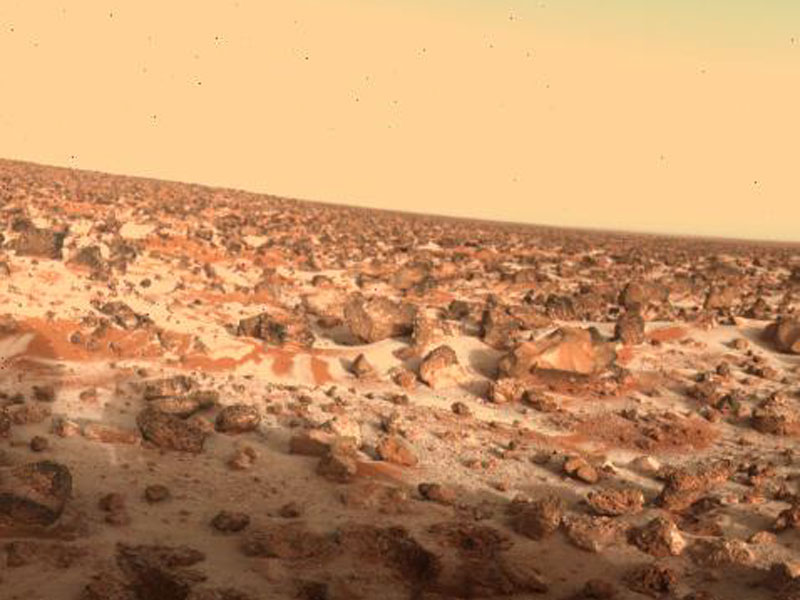 Researchers say the object, about 160 feet across, has an unusually good chance of plowing into the planet Jan. 30.
Researchers say the object, about 160 feet across, has an unusually good chance of plowing into the planet Jan. 30.Talk about your cosmic pileups.
An asteroid similar to the one that flattened forests in Siberia in 1908 could plow into Mars next month, scientists said Thursday.
Researchers attached to NASA's Near-Earth Object Program, who sometimes jokingly call themselves the Solar System Defense Team, have been tracking the asteroid since its discovery in late November.
The scientists, at the Jet Propulsion Laboratory in La Cañada Flintridge, put the chances that it will hit the Red Planet on Jan. 30 at about 1 in 75.
A 1-in-75 shot is "wildly unusual," said Steve Chesley, an astronomer with the Near-Earth Object office, which routinely tracks about 5,000 objects in Earth's neighborhood.
"We're used to dealing with odds like one-in-a-million," Chesley said. "Something with a one-in-a-hundred chance makes us sit up straight in our chairs."
The asteroid, designated 2007 WD5, is about 160 feet across, which puts it in the range of the space rock that exploded over Siberia. That explosion, the largest impact event in recent history, felled 80 million trees over 830 square miles.
 The Tunguska object broke up in midair, but the Martian atmosphere is so thin that an asteroid would probably plummet to the surface, digging a crater half a mile wide, Chesley said.
The Tunguska object broke up in midair, but the Martian atmosphere is so thin that an asteroid would probably plummet to the surface, digging a crater half a mile wide, Chesley said.The impact would probably send dust high into the atmosphere, scientists said. Depending on where the asteroid hit, such a plume might be visible through telescopes on Earth, Chesley said.
The Mars Reconnaissance Orbiter, which is mapping the planet, would have a front-row seat. And NASA's two JPL-built rovers, Opportunity and Spirit, might be able to take pictures from the ground.
Because scientists have never observed an asteroid impact -- the closest thing being the 1994 collision of comet Shoemaker-Levy with Jupiter -- such a collision on Mars would produce a "scientific bonanza," Chesley said.
The asteroid is now behind the moon, he said, so it will be almost two weeks before observers can plot its course more accurately.
The possibility of an impact has the Solar System Defense Team excited.
"Normally, we're rooting against the asteroid," when it has Earth in its cross hairs, Chesley said. "This time we're rooting for the asteroid to hit."

1 comment:
We're still heeerrreee...
Seriously... there was all this hype about the millenium, something is supposed to be happening this year 2010 right?
Other people are saying that the world is going to end 2012!
Well bring it on, I'll have my sunglasses at the ready.
Post a Comment